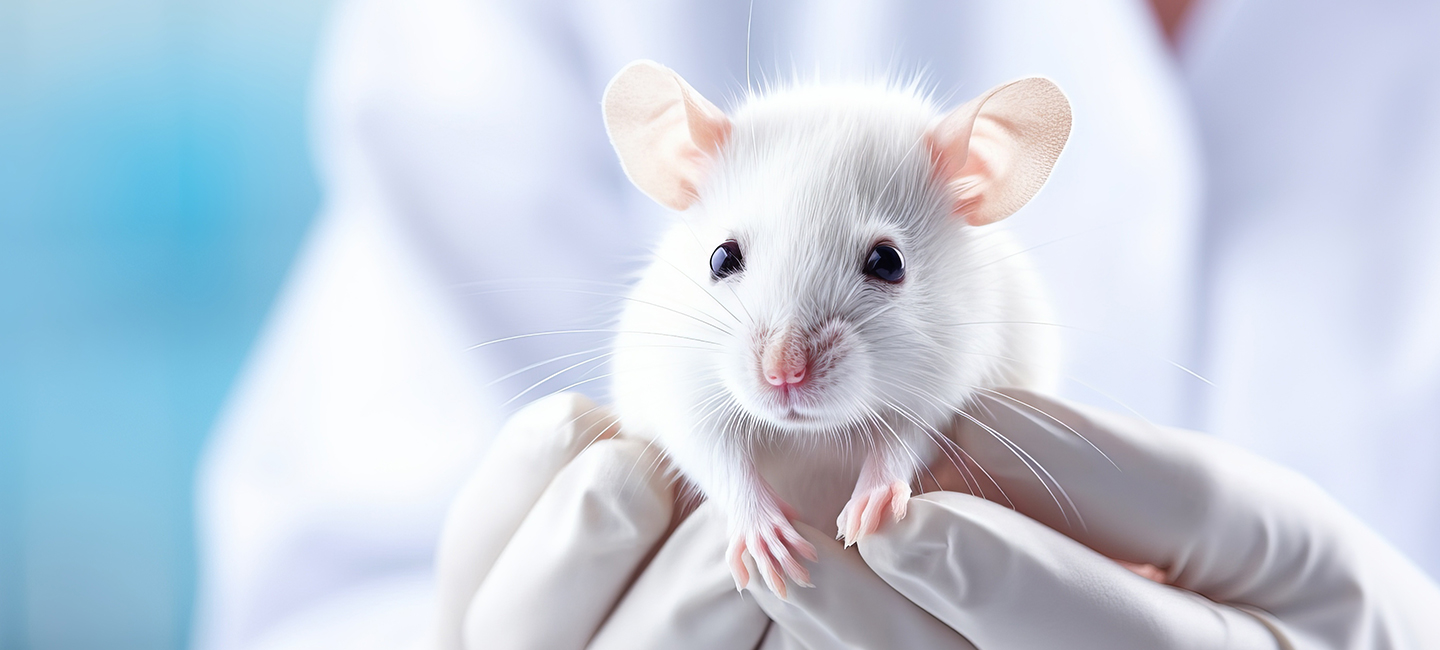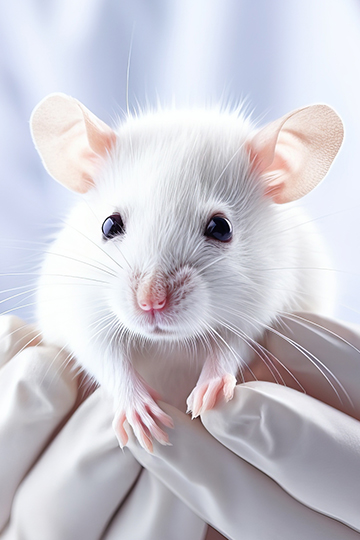

Another glimpse of State cruelty: in the space of nine days, 586,558 animals - a quarter of the official annual figure - became "tools" in laboratories.
The Ministry of Higher Education and Research tirelessly continues to approve projects imposing suffering and death on animals. A quarter of the annual number of animals used has been exceeded in just nine days.
With nearly 75% of the French population opposed to animal experimentation, and the support of our political representatives, we continue to demand transparency, the use of alternative methods and funding for research dedicated to them! Join us: write to the Ministry!
The MESR recently declared that 2,158,058 uses of animals were made in 2022. This figure is misleading, as it only takes into account the first uses of an animal. In reality, there are many more experiments carried out during the year. The fate of 586,558 animals was sealed in just a few days, from May 23 to 31: 537,266 mice, 480 monkeys, 91 dogs, 80 cats, 752 hamsters, 12,477 rats, 5,700 lizards, 13,823 fish, 7,360 frogs, 1,094 pigs, 1,653 rabbits, 70 sheep, 60 cows, 5,102 chickens and 550 other rodents (some projects don’t bother to specify the species)… Virtually all of them will then be euthanized. This is the appalling reality of French laboratories!
We are highlighting a representative but non-exhaustive selection of what is approved every day by our institutions…
Hundreds of monkeys:
- 34 marmosets will be subjected to severe pain with several heavy surgeries, weekly anesthesia, and will endure inflammation, infection, breathing difficulties, tremors, abscesses and brain edema to “better understand how the brain integrates and represents visual information”… When they are no longer useful, they will be put to death for tests and dissection to analyze their brains;
- 22 baboons will be used in antibody toxicity studies: they will undergo several anesthesia and punctures, before being euthanized to harvest their organs;
- Hundreds of marmosets and macaques will be sedated to undergo multiple samples.
Dogs :
Dogs will also be exploited for drug trials, enduring injection-related pain as well as potential complications such as arterial hypotension or arrhythmias.
Frogs:
Thousands of xenopus tadpoles will be used to test pharmacological compounds and subjected to toxicities that can lead to death, potential paralysis as well as stress and pain. Fish are not to be outdone either, as several hundred have been subjected to a test designed to determine the acute toxicity of a chemical substance. The severity of the project is classified as severe.
The rabbits :
They are also among this week’s victims… One of the projects particularly stood out for us: if the rabbit doesn’t pass the trial entry tests, he is automatically killed. In another project, 1,155 rabbits will undergo surgery to inject a substance into their eye, followed by a series of painful examinations involving inflammation of eye tissue and retinal detachment. They will of course all be euthanized at the end of the procedures.
Small herbivores:
Finally, rodents are still the biggest victims of animal experimentation. They account for around 94% of all animals tested during this period, or 551,045 small herbivores. Here are a few illustrations:
- To find ways of accelerating healing and treating certain skin conditions, 1,200 mice and 1,200 rats will undergo cell or tissue transplants, resulting in severe pain and euthanasia.
- To prevent the development of obesity, 3,360 mice will be kept in individual cages for 26 weeks, undergoing numerous injections, examinations and sampling. This project is of severe severity and will result in the euthanasia of all the animals used.
- In order to understand the mechanisms behind epileptic seizures, 1,714 genetically modified mice – “epilepsy mouse models” – undergo spontaneous epileptic seizures several times a day, with a risk of death and hypothermia. They also undergo electrode implantation, acoustic tests and the Morris pool test. So, before being euthanized, they suffer severe pain.
- A mouse production project: 300,000 mice will be sampled. If they have the desired genetic traits, they will be used in other projects. If not, they will be euthanized.
- To gain a better understanding of muscle regeneration, 390 mice will undergo human muscle transplants or 3D muscles generated by human cells. After enduring inflammation, pain, hypothermia, hypotension and hypoxia, they will all be euthanized.
- Induction of colitis in 600 mice, who will suffer severe pain due to intestinal inflammation leading to general malaise, diarrhea and cachexia. All will be killed.
- Injections of an inflammatory molecule will be performed on 3,508 baby mice, who will then undergo multiple electric shocks as part of behavioral tests and an intracranial injection of a product creating a lesion in the brain. The pain is severe, and all the animals will be euthanized to remove their brains.
- A further 210 rats will also be subjected to repeated electric shocks, after being injected several times with a molecule that can lead to their death. They will all be put to death.
- A bacterium responsible for certain nosocomial infections is injected into 560 mice, who endure terrible pain of severe severity.
- 150,000 mice will undergo biopsies and genetic mutations that can lead to pain, difficulty moving and, for some, death. The animals will either be killed as unusable, or kept alive to replenish breeding stock or to be used in other projects.
- Induction of amyotrophic lateral sclerosis in 596 mice, who will suffer severe pain, muscle atrophy, gait disorders, weight loss and stress as a result of manipulations and behavioral tests.
- Injection of tumor cells and various compounds: 6,000 mice will suffer severe pain, reduced mobility and weight loss before being euthanized.
- As part of autism research, 6,950 mice will undergo numerous samples and implantation of either a metal frame on the surface of the skull, or intracerebral and intramuscular electrodes, or an intracerebral optical fiber. They will then be subjected to behavioral tests, including forced swimming, which we have decried for many years. All the mice will be killed in order to harvest their brains.
We demand that laboratories systematically use alternative methods, as required by law, and that professionals be trained in animal-free testing. We also call on our political representatives to allocate real funding to research into these methods. A strong political will translated into action is needed to overcome the stagnation and finally adopt an innovative approach!
To put an end to these cruel methods, which condemn millions of sentient beings to suffering and death every year, join us in calling for an end to animal experimentation through ethical change translated into action. You too can write to the Minister of Higher Education and Research: download the model letter.
AI-generated photo